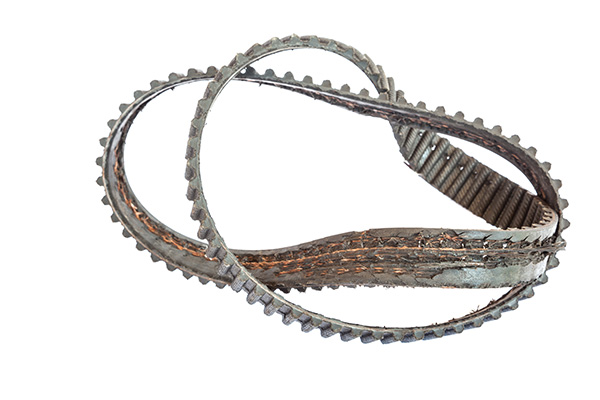
If you've ever popped the hood of your car and stared at the engine, you've probably seen a network of belts winding their way through various components. But do you know what those belts do? The two essential belts in your car are the timing belt and the serpentine belt. While they may seem similar, they play very different roles in keeping your vehicle running. Understanding the difference between these two belts can help you maintain your car better and avoid unexpected breakdowns.
The Role of the Timing Belt
Let's start with the timing belt, often considered one of the most crucial components in your engine. The timing belt is responsible for synchronizing the rotation of the crankshaft and the camshaft. In simpler terms, it ensures that your engine's valves open and close at the right times during the intake and exhaust strokes of each cylinder. This precise timing is vital for your engine to run efficiently and without interference. If the timing is off, even by a small amount, it can cause the engine to run poorly or, in worst-case scenarios, lead to engine damage.
The timing belt is typically made from a high-strength rubber material that's reinforced with nylon cords. It has teeth on the inside surface that grip gears as it rotates, keeping everything in sync. Over time, the belt can wear out, and if it breaks while the engine is running, it can cause significant internal damage, often leading to costly repairs. That's why manufacturers recommend replacing the timing belt at regular intervals, usually every 60,000 to 100,000 miles, depending on the vehicle.
The Serpentine Belt
On the other hand, the serpentine belt, also known as the accessory belt, drives multiple peripheral devices in your car. This single, continuous belt is responsible for powering essential components such as the alternator, power steering pump, water pump, and air conditioning compressor. Unlike the timing belt, which is hidden inside the engine, the serpentine belt is visible when you open the hood, winding its way around various pulleys.
The serpentine belt is named for its snake-like path through the engine bay. It's made from a durable rubber compound designed to withstand high temperatures and continuous use. However, like any rubber component, it will eventually wear out and can crack, fray, or stretch over time. If the serpentine belt fails, it can lead to the loss of power steering, overheating, and a dead battery, as the alternator won't be able to charge it.
Key Differences Between the Two Belts
Now that you have a basic understanding of what each belt does, let's delve into the key differences between the timing belt and the serpentine belt.
First, their roles within the engine are entirely different. The timing belt ensures that the engine's internal components operate in perfect harmony, while the serpentine belt powers external accessories that are crucial for the car's operation but not directly related to engine timing.
Another significant difference is their location. The timing belt is usually located inside the engine, behind the timing cover, and is not easily visible. Replacing it is a more complex and labor-intensive job that often requires a skilled technician. In contrast, the serpentine belt is on the outside of the engine and can be replaced more easily and quickly, often without needing to dismantle other components.
The consequences of failure are also different. A broken timing belt can result in severe engine damage, especially in interference engines where the pistons and valves occupy the same space at different times. If the timing belt snaps, the pistons can collide with the valves, leading to bent valves, damaged pistons, and even a ruined engine. Conversely, a serpentine belt failure, while inconvenient, usually doesn't cause catastrophic damage. However, it can leave you stranded, as essential systems like power steering and the alternator will stop functioning.
Maintenance and Replacement Intervals
Because of their different functions and the potential consequences of their failure, the timing belt and serpentine belt have different maintenance and replacement intervals. As mentioned earlier, the timing belt should be replaced approximately every 60,000 to 100,000 miles. However, it's important to consult your vehicle's owner's manual for the manufacturer's specific recommendation. Neglecting to replace the timing belt can lead to costly repairs, far exceeding the cost of a new belt.
On the other hand, the serpentine belt typically lasts between 50,000 and 100,000 miles, but its condition should be checked more frequently. Unlike the timing belt, which is hidden away, the serpentine belt is exposed and can be easily inspected for signs of wear, such as cracks, fraying, or glazing. It's also worth noting that some vehicles use a serpentine belt tensioner, a device that maintains the proper tension on the belt. If the tensioner fails, it can cause the belt to slip or come off entirely.
Regular maintenance of both belts is crucial to ensure the longevity of your vehicle and prevent unexpected breakdowns. By staying on top of their condition, you can avoid the headache and expense of sudden belt failure.
When Should You Replace These Belts?
So, when should you consider replacing these belts? The timing belt replacement should follow your car manufacturer's guidelines. Ignoring the replacement interval can result in significant engine damage, as discussed earlier. Some manufacturers also suggest replacing other components, like the water pump, at the same time since they're often driven by the timing belt and located in the same area.
For the serpentine belt, replacement depends on its condition. If you notice any visible wear or hear squealing noises coming from the engine, it's time to have the belt checked by a professional. In many cases, a failing serpentine belt will give you warning signs before it completely fails, unlike the timing belt, which can snap without much notice.
Think your belts might need a check-up? Visit Gil's Garage of Half Moon for a thorough inspection and replacement service that ensures your vehicle stays on the road, not in the shop.